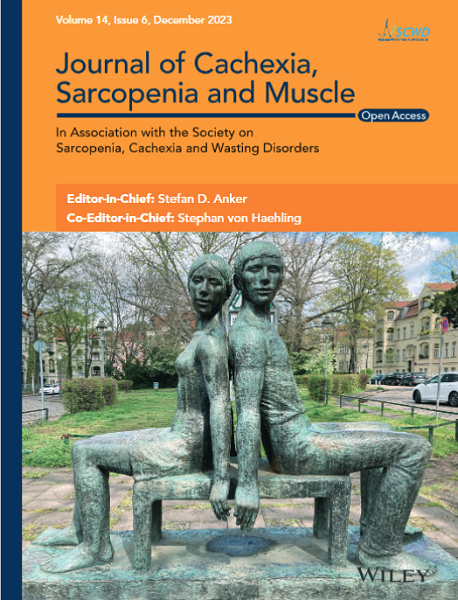Mapping Normative Muscle Health Metrics Across the Aging Continuum: A Multinational Study Pooling Data From Eight Cohorts in Japan, Malaysia and Taiwan
Abstract
Background
The vigour of our musculature wanes as the years advance, and prognosticating the concomitant trajectories throughout the course of life assumes paramount importance for judicious and timely interventions. In the present study, we aimed to establish age- and sex-specific reference centiles for multiple muscle health metrics and reveal the distributions of these metrics throughout the aging process in the Asian population.
Methods
By using cross-sectional pooled data of community dwellers aged 20 years or older in eight cohorts from Taiwan, Japan and Malaysia, normative values for muscle health metrics (calf circumference (cm), relative appendicular skeletal muscle (RASM) (kilogram per square metre), body mass index (BMI)–adjusted appendicular skeletal muscle mass (kilogram/(kilogram per square metre)), handgrip strength (kilogram), five-time chair stand (seconds) and gait speed (metre per second)) in men and women, categorized by age groups, are calculated. The mean values, along with the 5th, 25th, 50th, 75th and 95th percentiles of these muscle health metrics, are also delineated for both sexes.
Results
Among 34 265 (16 164 men, 18 101 women) participants from eight cohorts, calf circumference declined in age groups from 60 years onward. RASM values declined from the 50s in men but were stable in women until the 80s. ASM/BMI values showed declines in older age groups for both sexes. Handgrip strength declined similarly from 40 years of age in both sexes. Five-time chair stand performance declined from the 30s. Gait speed peaked at 1.6 m/s in men in their 50s and then declined, while it declined in women in their 60s. The inflection points for decline differed by metric and sex. The 20th percentile cutoffs for individuals aged 65–69 years were as follows: calf circumference, 33.0 cm (men) and 31.5 cm (women); RASM, 7.0 kg/m2 (men) and 5.5 kg/m2 (women); ASM/BMI, 0.78 kg/(kg/m2) (men) and 0.56 kg/(kg/m2) (women); handgrip strength, 30.4 kg (men) and 18.1 kg (women); five-time chair stand, 9.4 s (men) and 10.0 s (women); and gait speed, 0.9 m/s (both). Those in the fifth percentile of all muscle health metrics faced earlier declines than their 95th percentile counterparts did, highlighting the critical roles in identifying these high-risk groups.
Conclusion
The pooled analysis of eight Asian cohorts clearly outlined the age-related changes in various muscle health metrics, with the inflection point of accelerated decline showing age- and sex-specific characteristics. Defining trajectories of muscle health metrics across life stages facilitates timely interventions to mitigate age-related risks and promote healthy longevity.


 求助内容:
求助内容: 应助结果提醒方式:
应助结果提醒方式:


